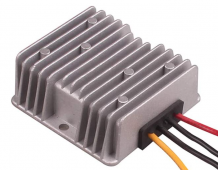My system is 24 volt nominal 29 volt actual and i want to fit a small Computer type fan to turn on when a piece of equipment reaches a certain temperature . The only thing i am having problems with is finding a 8cm fan that will operate at this voltage , 5 , 12 , 24 and 48 are al no problem however none of those nominal voltage fans will operate at 29 volts , the range they need is either higher or lower than i require . 30 Volt fans are available but here in Spain getting anything is a problem , Amazon is the best option most of us have but none there either .
A friend suggested i bought a 24 volt fan and reduce the voltage to suite , the voltage required on these fans is around 27.5 volts and they are all around 2 watts . I have been told that as i plan to install a light bulb to show when the fan is on that if wired in series it will reduce the voltage but i know very little about electronics so dont know by how much and what size bulb i would need .
If anyone can help then i would be most grateful .
A friend suggested i bought a 24 volt fan and reduce the voltage to suite , the voltage required on these fans is around 27.5 volts and they are all around 2 watts . I have been told that as i plan to install a light bulb to show when the fan is on that if wired in series it will reduce the voltage but i know very little about electronics so dont know by how much and what size bulb i would need .
If anyone can help then i would be most grateful .



